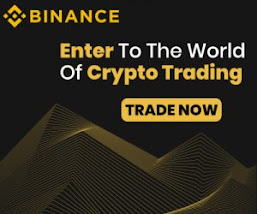Non-fungible tokens (NFT) is a way to represent anything which is unique as an Ethereum-based asset. NFTs are giving more power these days to content creators than ever before. NFTs are powered by smart contracts on the Ethereum blockchain.
What's an NFT?
NFTs are tokens that we can be used to represent ownership of unique items. They let us tokenize different things like Art, collectibles, even real estate. They can only have one official owner at a time and they're secured by the Ethereum blockchain no one can modify the record of ownership or copy/paste a new NFT into existence.
NFT stands for non-fungible token. Non-fungible is an economic term that you could use to describe things like your furniture, a song file, or your computer. These things are not interchangeable for other items because they have unique properties.
Fungible items, on the other hand, can be exchanged because their value defines them rather than their unique properties. For example, ETH or dollars are fungible because 1 ETH / $1 USD is exchangeable for another 1 ETH / $1 USD.
NFT example
For example, a painting of Mona Lisa is a one-of-a-kind painting in the world, and there is only one authentic piece. Thus, as you can see why this painting will hold value. Therefore, even if you take a photo or buy a replica, it won’t be the one and original painting.
This type of unique nature of this token gives it value. But it also needs to be associated with media, which means not just anyone can sell NFTs at a high price point. You need to have a fanbase or an admirer of your work to be renowned to buy and sell NFTs. Thus, when you are buying the non-fungible tokens, you will get ownership of that asset and can sell it later on.
How do NFTs work?
NFTs have some special properties:
Each token minted has a unique identifier.
They're not directly interchangeable with other tokens 1:1. For example 1 ETH is exactly the same as another ETH. This isn't the case with NFTs.
Each token has an owner and this information is easily verifiable.
They live on Ethereum and can be bought and sold on any Ethereum-based NFT market.
In other words, if you own an NFT:
You can easily prove you own it.
No one can manipulate it in any way.
You can sell it, and in some cases this will earn the original creator resale royalties.
Or, you can hold it forever, resting comfortably knowing your asset is secured by your wallet on Ethereum.
And if you create an NFT:
- You can easily prove you're the creator.
- You determine the scarcity.
- You can earn royalties every time it's sold.
- You can sell it on any NFT market or peer-to-peer. You're not locked in to any platform and you
- don't need anyone to intermediate.
Scarcity
The creator of an NFT gets to decide the scarcity of their asset.
For example, consider a ticket to a sporting event. Just as an organizer of an event can choose how many tickets to sell, the creator of an NFT can decide how many replicas exist. Sometimes these are exact replicas, such as 5000 General Admission tickets. Sometimes several are minted that are very similar, but each slightly different, such as a ticket with an assigned seat. In another case, the creator may want to create an NFT where only one is minted as a special rare collectible.
In these cases, each NFT would still have a unique identifier (like a bar code on a traditional "ticket"), with only one owner. The intended scarcity of the NFT matters, and is up to the creator. A creator may intend to make each NFT completely unique to create scarcity, or have reasons to produce several thousand replicas. Remember, this information is all public.
Royalties
Some NFTs will automatically pay out royalties to their creators when they're sold. This is still a developing concept but it's one of the most powerful. Original owners of Euler Beats Originals earn an 8% royalty every time the NFT is sold on. And some platforms, like Foundation and Zora, support royalties for their artists.
This is completely automatic so creators can just sit back and earn royalties as their work is sold from person to person. At the moment, figuring out royalties is very manual and lacks accuracy – a lot of creators don't get paid what they deserve. If your NFT has a royalty programmed into it, you'll never miss out.
What are NFTs used for?
Here's more information of some of the better developed use-cases and visions for NFTs on Ethereum.
Digital content
Gaming items
Domain names
Physical items
Investments and collateral
The copy/paste Saga
Naysayers often bring up the fact that NFTs "are dumb" usually alongside a picture of them screenshotting an NFT artwork. "Look, now I have that image for free!" they say smugly.
Well, yes. But does googling an image of Picasso's Guernica make you the proud new owner of a multi-million dollar piece of art history?
Ultimately owning the real thing is as valuable as the market makes it. The more a piece of content is screen-grabbed, shared, and generally used the more value it gains.
Owning the verifiably real thing will always have more value than not being able to verify your ownership
Boosting gaming potential
NFTs have seen a lot of interest from game developers. NFTs can provide records of ownership for in-game items, fuel in-game economies, and bring a host of benefits to the players. In a lot of regular games you can buy items for you to use in your game. But if that item was an NFT you could recoup your money by selling it on when you're done with the game. You might even make a profit if that item becomes more desirable.
For game developers – as issuers of the NFT – they could earn a royalty every time an item is re-sold in the open marketplace. This creates a more mutually-beneficial business model where both players and developers earn from the secondary NFT market.
This also means that if a game is no longer maintained by the developers, the items you've collected remain yours. Ultimately the items you grind for in-game can outlive the games themselves. Even if a game is no longer maintained, your items will always be under your control. This means in-game items become digital memorabilia and have a value outside of the game.
Decentraland, a virtual reality game, even lets you buy NFTs representing virtual parcels of land that you can use as you see fit.
Ethereum and NFTs Relationship
Ethereum makes it possible for NFTs to work for a number of reasons:
- Transaction history and token metadata is publicly verifiable – it's simple to prove ownership history.
- Once a transaction is confirmed, it's nearly impossible to manipulate that data to "steal" ownership.
- Trading NFTs can happen peer-to-peer without needing platforms that can take large cuts as compensation.
All Ethereum products share the same "backend". Put another way, all Ethereum products can easily understand each other – this makes NFTs portable across products. You can buy an NFT on one product and sell it another one easily. As a creator you can list your NFTs on multiple products at the same time – every product will have the most up-to-date ownership information.
Ethereum never goes down, meaning your tokens will always be available to sell.
Create and Sell Your NFTs on Binance












































0 Comments